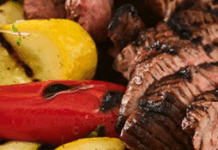By Shelby Varner, K-State Research and Extension news
A cold spell that hit Kansas in October last year is having a negative effect on cedar trees and other landscape ornamentals this fall, according to a Kansas State University horticulture expert.
Ward Upham said “most people think if they’re seeing damage like that it must have been something that happened in the last month or maybe two months. Actually it was last fall.”
“Primarily it’s atlas cedars, but there are other plants that are effected as well,” he said.
Upham said people are concerned as to why their cedar trees are dying so quickly.
Last October in Wichita, “daytime highs (reached) 87 degrees on Oct. 22 and the low (fell to) 24 degrees on Oct. 26,” Upham said. “The problem with that is that those trees hadn’t hardened off.”
He said that trees are vascular plants with (Continued on page 13)
(TREES Continued from page 1) xylem and phloem tissue, and while functional xylem tissue is dead, functional phloem tissue is living. The phloem tissue is responsible for carrying food that is made in the leaves down to the roots.
“What happened when you had that sharp drop in temperature is that phloem was damaged or killed and because of that the roots were not able to get the energy they needed from the leaves,” Upham said.
Roots do have stored energy; however, they only have a limited supply. “Once they run out of energy, it doesn’t take long for at least a portion of that plant to die,” Upham said.
Upham said once the tree collapses, it is done. If the limbs of the tree are brittle, then that part of the tree is dead; if the limbs are limber, there is a chance of survival.
“If a portion of that tree is affected, then you have a decision to make,” he said. “Imagine if you removed all the dead (limbs): Is it going to be worth keeping? If it isn’t, you might as well take it down. If it is worth keeping, then what you want to do is try to avoid any further stress.”
Upham encourages homeowners to water trees – making sure the soil is moist and not water-logged — to avoid further stress.
Upham and his colleagues in K-State’s Department of Horticulture and Natural Resources produce a weekly Horticulture Newsletter with tips for maintaining home landscapes. The newsletter is available to view online or can be delivered by email each week.
Interested persons can also send their garden- and yard-related questions to Upham at wupham@ksu.edu, or contact your local K-State Research and Extension office.



